One framework. One room. A lot of honest reflection.

Dawn Ho is the Community Development for Singapore Gymnastics. She has recently completed her Masters degree in Sports and Exercise Studies.
In this post, Dawn tackles the issue of change, which invariably is more complex than we first imagine. She reminds us that it is all too easy to forget the human dimension of change.
In any change process Dawn encourages those in the torrent of change to explore their current experiences of change, reflect on their thoughts, emotions, behaviours, and situations, and ideally, gain some clarity on their next steps and connection to their goals.
It is a good reminder for coach developers that introducing new initiatives has a people component as well as a technical component.
This article originally appeared in Dawn’s blog here
EXPLORE the HOUSE of CHANGE
Following the Australian Sports Commission’s Coaching and Officiating Conference 2025, held at GMHBA Stadium in Geelong, I had the opportunity to share a learning from the event to a group of local women coaches as part of a Community of Practice.
I recalled The House of Change —a framework that was only briefly mentioned during the closing speech of the conference, but it stuck with me. Back in Singapore, I conducted a 1-hour workshop where participants were invited to use the House of Change framework to work through a change process relevant to their lives.
Developed by Jane Greene and Anthony Grant (1), it frames personal change and goal achievement through the lens of four interconnected dimensions of human experience:
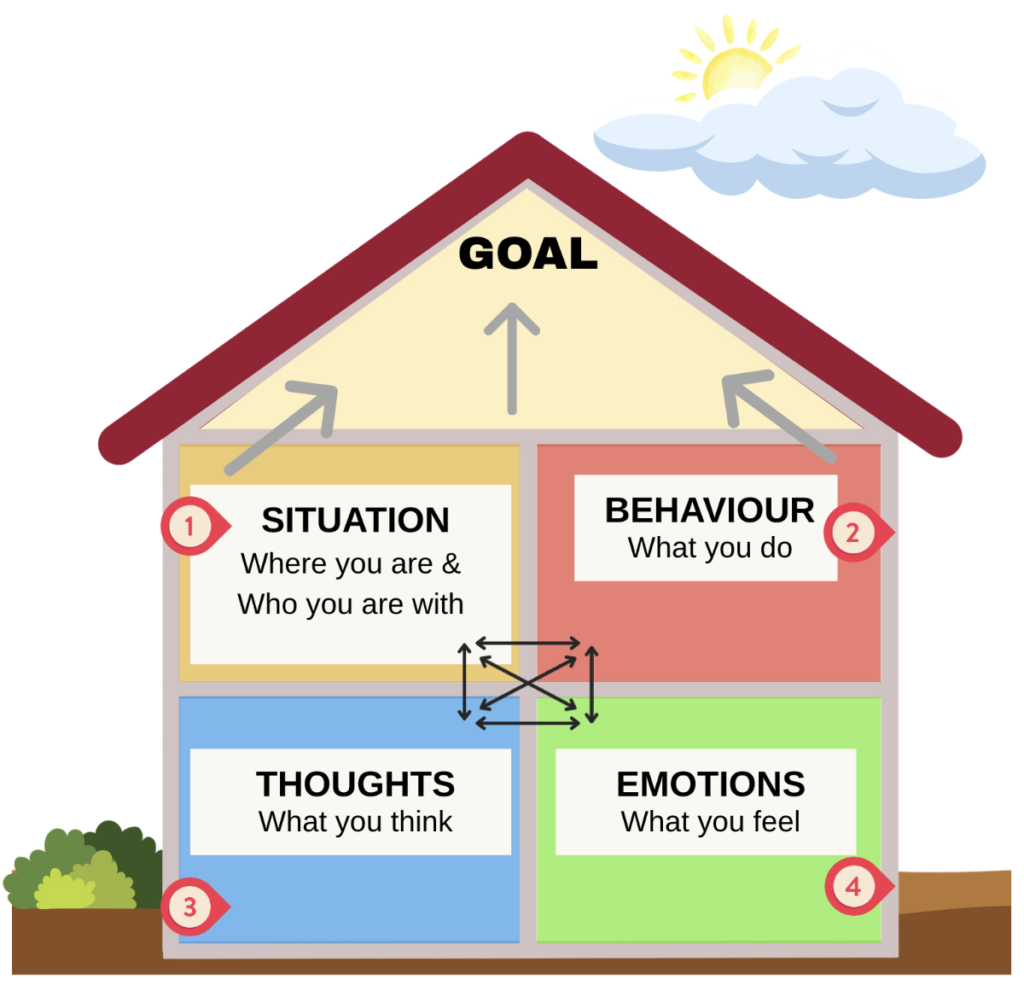
I was curious about how this framework could support the process of recognising and initiating change in a practical, everyday context.
THE HOUSE of CHANGE FRAMEWORK in ACTION
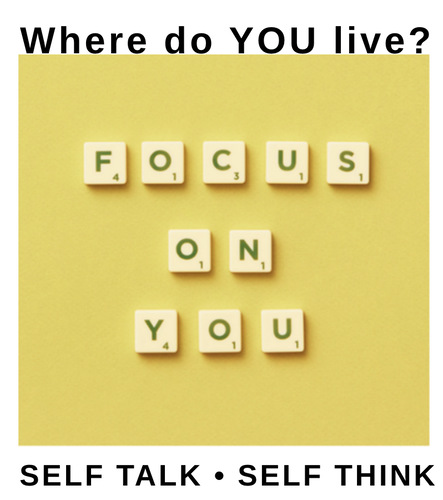
Workshop prompt #1 – Personal reflection
The workshop began with the coaches reflecting on their current state of mind by drawing their own House of Change—divided into four rooms, each representing a dimension of the framework.
They were then asked to consider a change they might be navigating in their work or personal life. Using short notes or key words, they filled in each ‘room’ and reflected on how the change was unfolding across the four areas, guided by the following prompts:
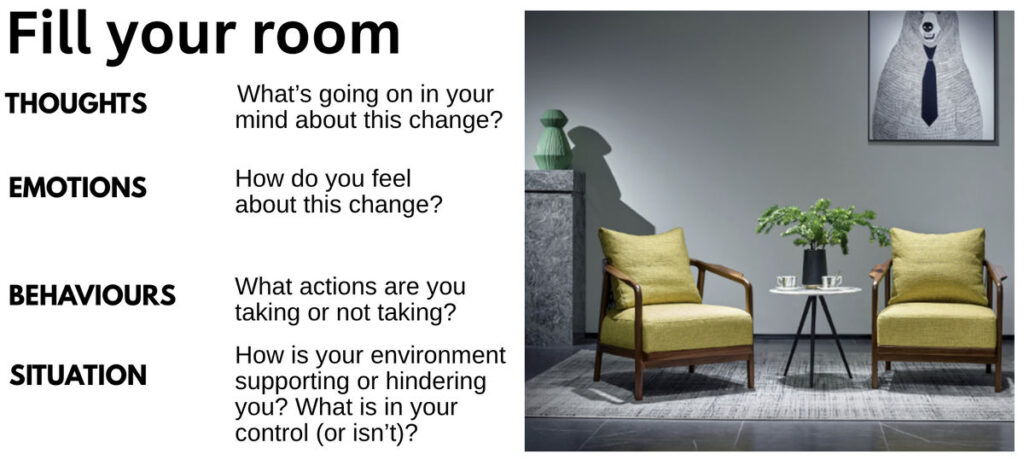
The workshop started with an invitation to the coaches to visit their current state of mind by drawing their own House of Change on a piece of paper with four rooms, one for each dimension of the framework.
Coaches were encouraged to fill in each “room” with short notes or key words and reflect on how personal change was playing out in the four areas of their lives.
Workshop prompt #2 – Collaborative reflection
In the second segment, coaches then broke into small groups to share their personal reflections, before reporting their group’s insights using into Mentimeter. This allowed the group to surface broader patterns and common themes in how coaches were experiencing change across the room.
Workshop prompt #3 – Thought transformation
In the final segment, coaches were invited to transform their combined House of Change into a collective House of Thrive.
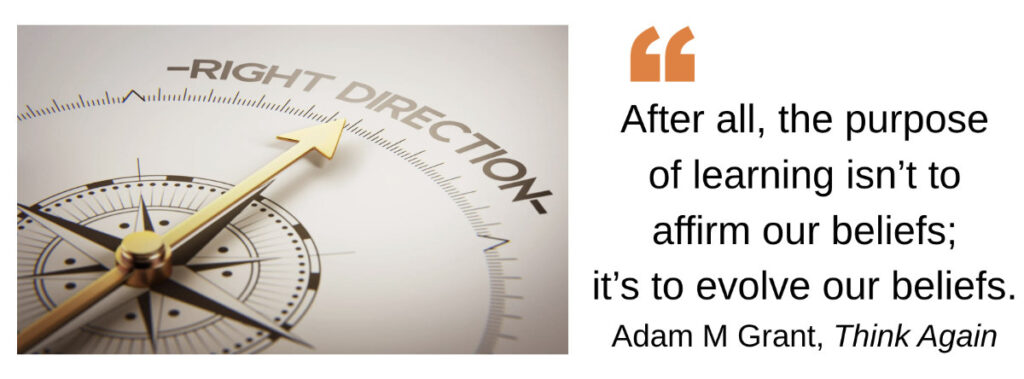
Each coach wrote one action per sticky note—one for each dimension—that could help them move from their current state toward a more empowered one, either as a group and/or individually. They were encouraged to keep the original House they had drawn for themselves, as a grounding reference for their journey.
OBSERVATIONS - CHANGE, IDENTITY & ANXIETY, PURPOSE
As we flashed the responses up on Mentimeter, one thing that really stood out was how many of the responses leaned toward negative emotions — particularly anxiety — even amidst the overall excitement about change.
The strong presence of anxiety in response to change may be closely tied to shifts in identity. For some of the women coaches present at that CoP, as some of their roles expand or shift, they aren’t just taking on new responsibilities — they’re often navigating multiple, sometimes conflicting, identities. This can create internal tension and lower self-confidence, especially when expectations feel misaligned (3).
That dip in confidence can make transitions feel more destabilising, even when they’re framed as exciting or full of potential. But, as the literature suggests, this doesn’t have to be permanent. Supportive mentorship, continuous exposure, and development opportunities can help individuals rebuild confidence and begin to internalise a stronger, more coherent sense of identity (4).
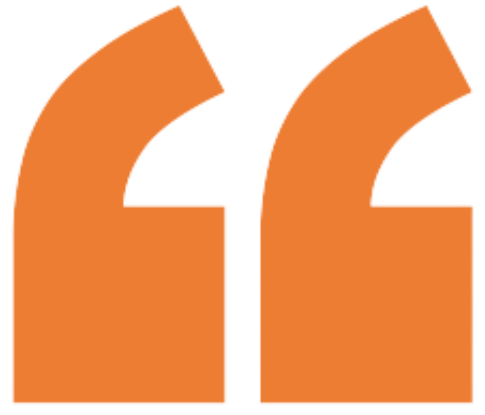
Over time, being able to see oneself — and be seen by others — in a new role becomes a key part of that identity shift (5).
THE FRAMEWORK in PRACTICE
A couple of weeks later, I reconnected with one of the workshop attendees who shared that she had started using the same framework with a student-athlete.
The student was feeling discouraged after being passed over for the role of captain, so they used the framework to explore what personal changes might be needed to earn a nomination from the team.
While I don’t know how their ongoing conversations will unfold, I imagine it will take a few more open discussions and moments of self-reflection for the athlete to clarify a sense of purpose or action plan—and to consider whether that plan truly aligns with her goals in the first place.
STAGES of CHANGE – LOOKING BACK
There may not be a perfect framework for navigating change, but starting by naming what’s hard or murky, creating a meaningful plan or sense of purpose, and then reflecting on that plan’s direction and relevance seems like a promising place to begin.
There might not be immediate answers or crystal-clear next steps from the workshop —and that’s okay.
The stages of change model (6), proposes that behaviour change is not a single event but occurs in stages.
With this in mind, if I could do anything differently it would be to design a series of workshops that followed and supported each participant’s unfolding change journey. Incorporating a journal log could also serve as a complementary tool to help individuals explore and track readiness to move from awareness to action.
To deepen reflection within the house of change framework, a helpful hint might be:
“If you revisit your House of Change in the next week/month/year, what might be different in your thoughts, emotions, behaviours, or situation?”
REFERENCES
(1) Grant, A., Greene, J., & Grant, A. M. (2003). Solution-focused coaching: Managing people in a complex world. Pearson Education.
(2) Grant, A. (2023). Think again: The power of knowing what you don’t know. Penguin.
(3) Lieff, S., Baker, L., Mori, B., Egan-Lee, E., Chin, K., & Reeves, S. (2012). Who am I? Key influences on the formation of academic identity within a faculty development program. Medical Teacher, 34(3), e208–e215. https://doi.org/10.3109/0142159X.2012.642827
(4) Schnaubert, L., Krukowski, S., & Bodemer, D. (2021). Assumptions and confidence of others: The impact of socio-cognitive information on metacognitive self-regulation. Metacognition and Learning, 16(3), 855–887. https://doi.org/10.1007/s11409-021-09269-5
(5) Freeman, K. J., Carr, S. E., Phillips, B., Noya, F., & Nestel, D. (2022). From clinician to educator: A scoping review of professional identity and the influence of impostor phenomenon. The Asia Pacific Scholar, 7(1), 21–32. https://doi.org/10.29060/TAPS.2022-7-1/RA2537
(6) Prochaska, J. O., Johnson, S., & Lee, P. (2009). The Transtheoretical Model of behavior change. In S. A. Shumaker, J. K. Ockene, & K. A. Riekert (Eds.), The handbook of health behavior change (3rd ed., pp. 59–83). Springer Publishing Company.

